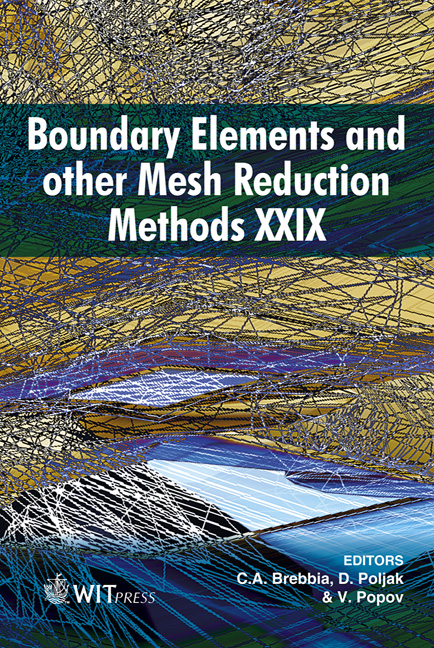Measures For The Postprocessing Of Grounding Electrodes Transient Response
Price
Free (open access)
Transaction
Volume
44
Pages
12
Published
2007
Size
500 kb
Paper DOI
10.2495/BE070291
Copyright
WIT Press
Author(s)
D. Poljak, V. Dorić, V. Murko & C. A. Brebbia
Abstract
Various measures for quantifying the transient response of simple grounding systems are proposed in this paper. In addition to the standard transient impedance concept the suggested measures arising from the circuit theory are instantaneous power, average power and total energy stored in the near field of a grounding electrode. The frequency response of the grounding electrode is obtained by using the antenna model (AM) while the associated transient response is computed using the Inverse Fourier Transform. The integro-differential realtionships arising from the wire antenna theory are numerically handled via the Galerkin-Bubnov scheme of the Indirect Boundary Element Method (GB-IBEM). A number of illustrative numerical results are presented in the paper. 1 Introduction Transient analysis of grounding systems, important for protection of personnel and equipment, is of widespread interest in electromagnetic compatibility (EMC) and high voltage (HV) engineering. Transient modeling of grounding systems can be carried out applying either the transmission line model (TLM) [1–3] or antenna (electromagnetic) model (AM) [4–6]. An important parameters arising from studies of transients in grounding systems is the transient impedance. Further to the transient impedance concept for postprocessing transient responses, widely adopted within EMC community, this work deals with some additional measures of a horizontal electrode transient response. These measures arise from the circuit theory and are, as follows: instantaneous power, average power and the total energy accumulated in the near field of the electrode.
Keywords





